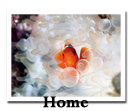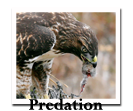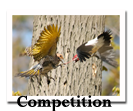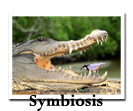 |
Predator and Prey Relationships
Organisms interact in many ways. One way is by hunting and killing another living thing for food. Predators are consumers that capture and eat other organisms for food. The organism being eaten is called the prey. Predators limit populations of prey in an environment. Because of this, important resources are less likely to become scarce, which decreases competition between organisms.

| kjh | Predators and prey have certain adaptations that help them survive. Predators, like the cheetah, can use speed to help catch prey that aren't so fast. Some also have the ability to ambush their prey after blending in with the environment and waiting until the perfect moment to attack. This technique is demonstrated by the goldenrod spider which hides in the goldenrod flower and waits for an insect to arrive. Prey also have ways to dodge being eaten by an enemy. They can run away, hide, or travel in groups for increased protection. |
Ways to avoid being eaten include camouflage, defensive chemicals, and
warning coloration. Have you ever seen the walking stick insect? It camouflages itself by mimicing a twig! Defensive chemicals are used by skunks, bees, wasps, ants and other organisms. They defend themselves
by injecting or releasing irritating chemicals. Yikes! Organisms that have these defensive chemicals sometimes also use warning coloration to make other organisms aware they are dangerous. Beware! Red, yellow,
black, white, and orange are the most common warning colors.
Continue to the Activity:
You may type in the web quest document, save, and then print. Or simply ask your teacher for a printed copy.
Brief Assessment:
Ticket out the Door
Images courtesy of National Geographic




